Florescent light bulb question
roselee z8b S.W. Texas
17 years ago
Related Stories

LIGHTING5 Questions to Ask for the Best Room Lighting
Get your overhead, task and accent lighting right for decorative beauty, less eyestrain and a focus exactly where you want
Full Story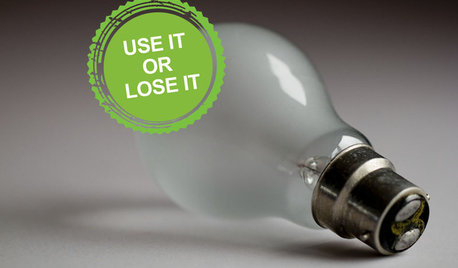
DECORATING GUIDESLose It: How to Get Rid of Old Light Bulbs
When the light goes out, you'll want to get rid of the bulb safely. Here's how
Full Story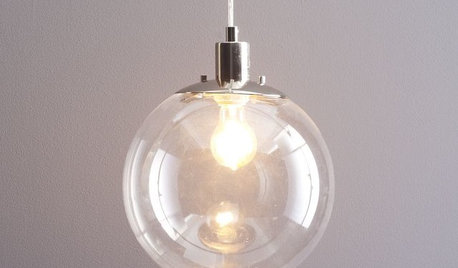
LIGHTINGGuest Picks: Exposed Bulb Lighting
Celebrate the filament bulb with 20 stylish lighting options
Full Story
GREEN DECORATING8 Questions to Help You See Through Green Hype
With the ecofriendly bandwagon picking up some dubious passengers, here's how to tell truly green products and services from the imposters
Full Story
GARDENING GUIDES7 Tropical Bulbs for a Summer Garden That Wows
Try these stunners in summer's powerful heat for garden thrills with an exotic flair
Full Story
DIY PROJECTSHoliday DIY: Mason Jar Forced Bulbs and Evergreen Gift Tags
Learn how to make these winter projects from the book ‘Garden Made’ by Stephanie Rose
Full Story
WORKING WITH PROS12 Questions Your Interior Designer Should Ask You
The best decorators aren’t dictators — and they’re not mind readers either. To understand your tastes, they need this essential info
Full Story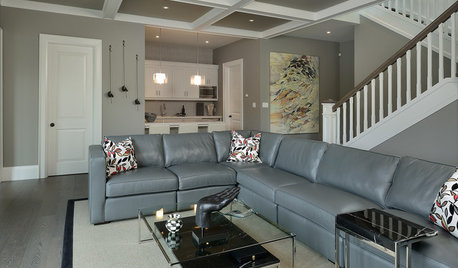
COLORWant Gorgeous Interior Colors? Look to the Light
See how to manipulate natural and artificial light — and learn about those baffling new bulbs — to get the exact room colors you want
Full Story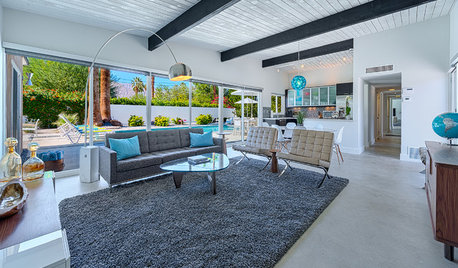
LIGHTINGBask in Lamplight's Comfort This Season
Get pro insight on lamp styles, shades and ever-confusing bulbs to enjoy the benefits of lamplight on long, cold nights
Full Story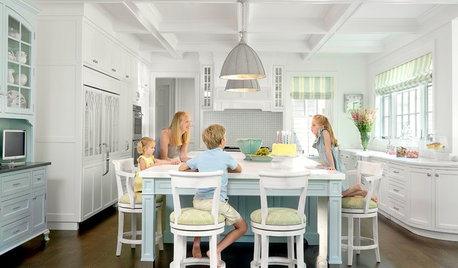
LIGHTINGSource List: 20 Pendants That Illuminate the Kitchen Island
See the ceiling lighting fixtures that are popular on Houzz and find out where to get them
Full Story





rick_mcdaniel
zitro_joe
Related Professionals
Rancho Palos Verdes Landscape Architects & Landscape Designers · Goodyear Landscape Contractors · Cockeysville Landscape Contractors · Fair Oaks Landscape Contractors · Hollywood Landscape Contractors · Miller Place Landscape Contractors · Painesville Landscape Contractors · Salem Landscape Contractors · South Lyon Landscape Contractors · Northlake Landscape Contractors · 45056 Window Contractors · East Renton Highlands Window Contractors · Edwardsville Window Contractors · Enumclaw Window Contractors · Seminole Window Contractorstrsinc
roselee z8b S.W. TexasOriginal Author
rick_mcdaniel
terryisthinking
roselee z8b S.W. TexasOriginal Author
pjtexgirl
maden_theshade
rick_mcdaniel
roselee z8b S.W. TexasOriginal Author
terryisthinking
MrsBox77
rick_mcdaniel
sally2_gw
sally2_gw
rick_mcdaniel
zitro_joe
terryisthinking
natvtxn
sally2_gw
roselee z8b S.W. TexasOriginal Author
seamommy
linda_tx8
rock_oak_deer
denisew